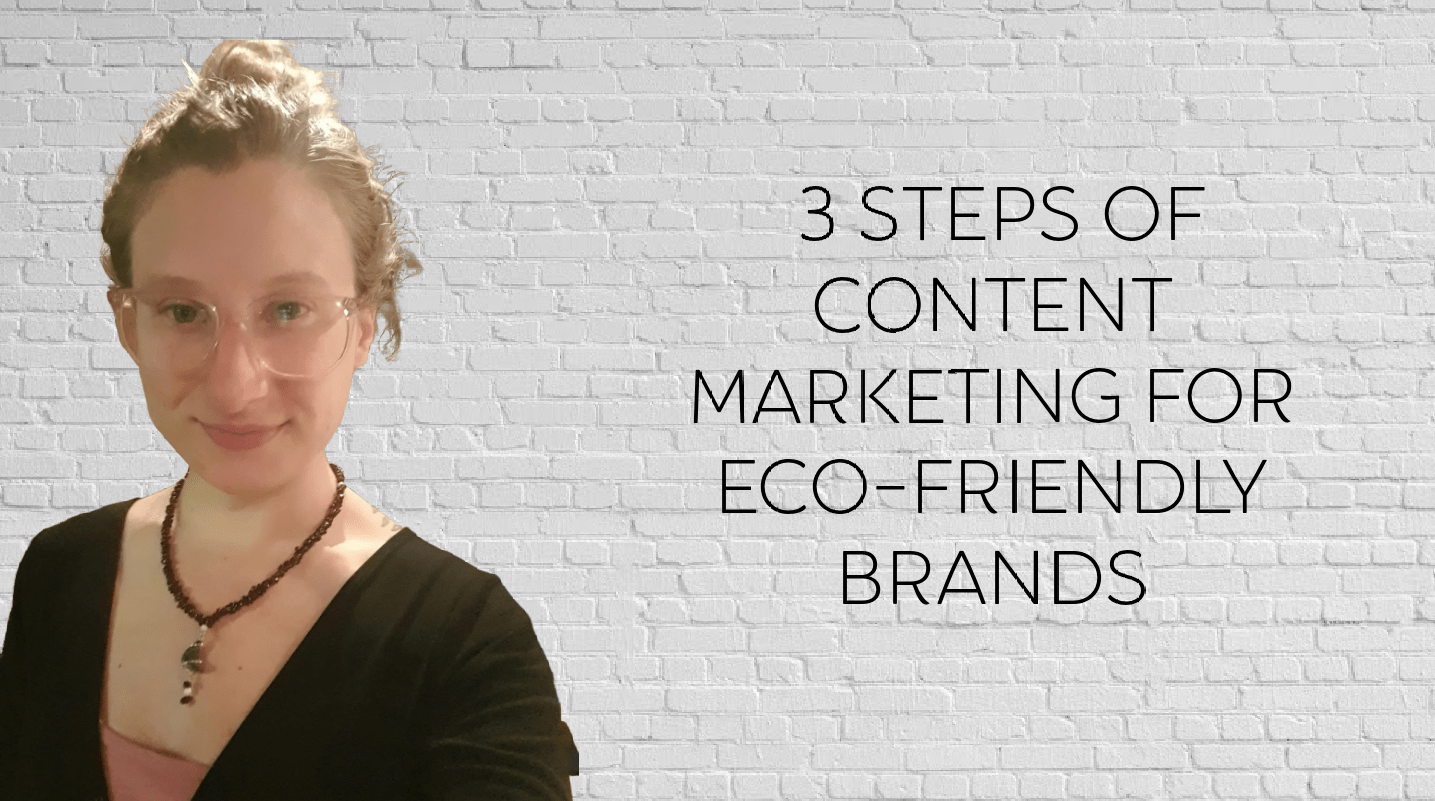In this article, you’ll learn 3 Steps of Content Marketing for Eco-Friendly Brands
When I first started working with small businesses, which was around 2009, I had a difficult time feeling confident when I was selling a product.
Something about Billy Mays and QVC home shopping, and those weird late-night infomercials with white people making huge messes in stupid always ran through my head.
I felt like I was tricking people into buying things from me, even though it was for their wellbeing (I sold health-giving teas), I was always honest, and I loved the product.
What I learned then and over and over since then is that a direct sales tactic will always feel “salesy” because it’s meant to. And that isn’t always a bad thing. Sometimes direct sales are the way to go – especially at holiday time.
The problem really arises when direct sales is the only tactic you employ to market your brand.
You’ll come across desperate at best, and sleezy and untrustworthy at worst. That doesn’t build a loyal customer base.
The best way to market your sustainable brand without feeling cheap or salesy is to utilize content marketing principles and share your value.
What is Content Marketing?
Content marketing is a type of marketing that focuses on sharing value with your audience through creating and sharing online content consistently. The point is to grow brand loyalty, create interest, and prove brand authority.
This isn’t a magic bullet. It takes work and time to grow. Most importantly, a brand using content marketing only grows when they’re speaking with the right voice to the right people.
But as my 19 year old self learned, once the audience is listening, it is simple to sell when you just focus on sharing the value of the product and care about the people using it.
Why Do Sustainable Brands Need Content Marketing?
Sustainable brands are particularly suited for content marketing because there is a ton of work that goes into being a truly sustainable brand. It is worth sharing both as inspiration (Sustainability is Not a Competition) and because it helps prove your authority in the sustainable space.
You’re often asking people to pay more and/or change some part of their lifestyle to utilize your products.
While there is a group of people that will be actively searching for your kind of sustainable, when you share the value and the reasons behind your choices and prices, people are much more likely to sing your praises.
Content marketing is also the way to show your audience that you’re not greenwashing or being performative with the socially conscious things you focus on with your brand.
Three Steps of Content Marketing
We think of content marketing as being a three-pronged approach.
Step one: Start with (you guessed it) Content
When you build a brand, any brand, that you love and feel passionate about, you learn a lot. Find a way to share what you learn and share things as you learn.
Whatever recipe, research, or experience you have – share it.
Typically, when we talk about “content” in this context, this means a blog or a video.
And we suggest working on creating this type of content 3-4 times per month, to start.
Protip: try to link your product or a CTA in your content so that you direct your audience to the step you want them to take.
Once you have this content posted, it’s not enough to just leave it there. You have to do the marketing part!
Step Two: How to do Content Marketing with Email
Don’t just continually show up in your subscribers inbox asking for money or sharing your sales. Share value and insight and wisdom – which is what you’re sharing in your content!
Every time you post a blog – send an email to tell your most engaged people about it. This puts you at a weekly email offering your community damn good information about something they care about.
Typically, when these content emails start to hit home, we see a few sales come in with each email – even though you aren’t offering a coupon code or being salesy. This is very clear evidence that your brand is gaining authority.
Sending emails this way regularly means that when you do decide to send a coupon or a special offer, it doesn’t feel salesy, it just feels nice to your audience.
Protip: Always include a call to action. Make it a habit to always tell your audience what you want them to do.
Of course, adding people into your email list using lead generation is not the topic of this article, but you should offer something like a coupon code or giving a webinar in exchange for an email address.
Step Three: Use Your Content on Social Media
Try not to worry too much about how often you’re posting on social media, as long as it’s consistent and relevant to your brand, you’re doing a great job. That being said, social media is made to make it very easy to share insights and brand values more frequently.
This is where your content comes in. Each week, make sure that 1-3 posts are about the content post that you made. Share a basic excerpt from your content post with a little bit of information about it. Always make sure to include a CTA and the right link to your post.
In the same way as with email, share your sales with care and relatively infrequently. This way it, again, feels like a gift to your customers rather than a desperate plea for them to buy your products.
Do you feel salesy when you market your brand? Tell us in the comments.





1 thought on “How to Market Your Sustainable Brand Without Cheapening it”
Nice post. I think It’s great